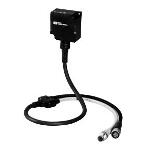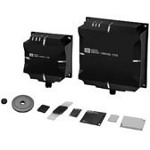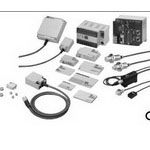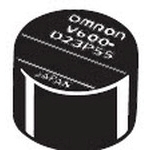RF identification (RFID) and Near Field Communication (NFC) products use radio waves to identify, track, or authenticate assets without a line of sight. In manufacturing, logistics, healthcare, and access control, they cut manual steps and feed clean data into software with minimal friction.
Online Components backs this work with reliable stock, supplier-authorized parts, and fast U.S.-based shipping that helps teams hit deadlines. You'll find NFC/RFID readers and writers plus NFC/RFID tags and transponders across common frequency bands and form factors. Review read range, protocol support, memory size, operating temperature, and mechanical style matched to your mounting or labeling method.
How to Choose the Right RF Identification
Frequency and protocol come first. Low Frequency (LF), High Frequency (HF, including NFC), and Ultra-High Frequency (UHF) behave differently near metal and liquids. Each protocol from the International Organization for Standardization/International Electrotechnical Commission (ISO/IEC 14443, ISO/IEC 15693, and related families) sets the rules for how devices exchange data.
Match read range and antenna geometry to the job: close-range authentication leans on compact HF/NFC readers and stickers, while broader checkpoints call for UHF tags and transponders tuned for longer distances. Confirm the host interface on your reader or writer (UART, I²C, SPI, USB, or Ethernet) and check power and thermal requirements for the deployment environment.
Popular Applications for RF Identification
Engineers, technicians, and purchasing teams use these parts to automate check-ins, track tools and bins, and verify builds at every station. NFC/RFID readers and writers pair with tags and transponders to mark fixtures, kits, and finished goods for instant validation during assembly or service. You'll see them in asset tracking and inventory control, access control and time-attendance terminals, medical or lab sample identification with hands-off scanning, and industrial automation where quick, reliable ID raises throughput. In retail and service settings, NFC can support short-range setup and field updates for devices without opening an enclosure.
Why Buy RF Identification from Online Components?
Online Components offers a wide selection of NFC/RFID readers, writers, tags, and transponders sourced from authorized suppliers for traceability and performance. You get U.S.-based inventory with fast shipping, responsive customer service, and a seamless online checkout that keeps procurement moving. Clear parametric filters and detailed product pages make it simple to compare protocols, memory options, and mechanical formats without guesswork.
RF Identification: What You Need to Know
What's the difference between NFC and other RFID?
NFC is a subset of HF RFID designed for very short-range interactions (typically a few centimeters) for pairing, authentication, or quick reads. UHF RFID supports longer read distances and faster inventory
How do metal and liquids affect performance?
Metal can detune antennas and block fields, while liquids absorb or reflect energy. Choose tags and transponders designed for these conditions and select readers and writers that match the frequency and antenna geometry of the site.
Which memory features matter on a tag?
Total user memory, block protection, and security options are the big three. For audit trails or field updates, pick devices with adequate writable memory and locking controls to keep critical data intact.
What host interfaces are common on readers and writers?
USB is convenient on the bench; UART, I²C, or SPI drop into embedded designs; Ethernet fits permanent installations that need remote management or higher-level system integration.
contact us
 English
English
 Chinese
Chinese
 Italiano
Italiano
 Portuguese
Portuguese
 Deutschland
Deutschland
 French
French
 Russian
Russian
 Japanese
Japanese
 Turkish
Turkish
 Korean
Korean
 Spanish
Spanish







